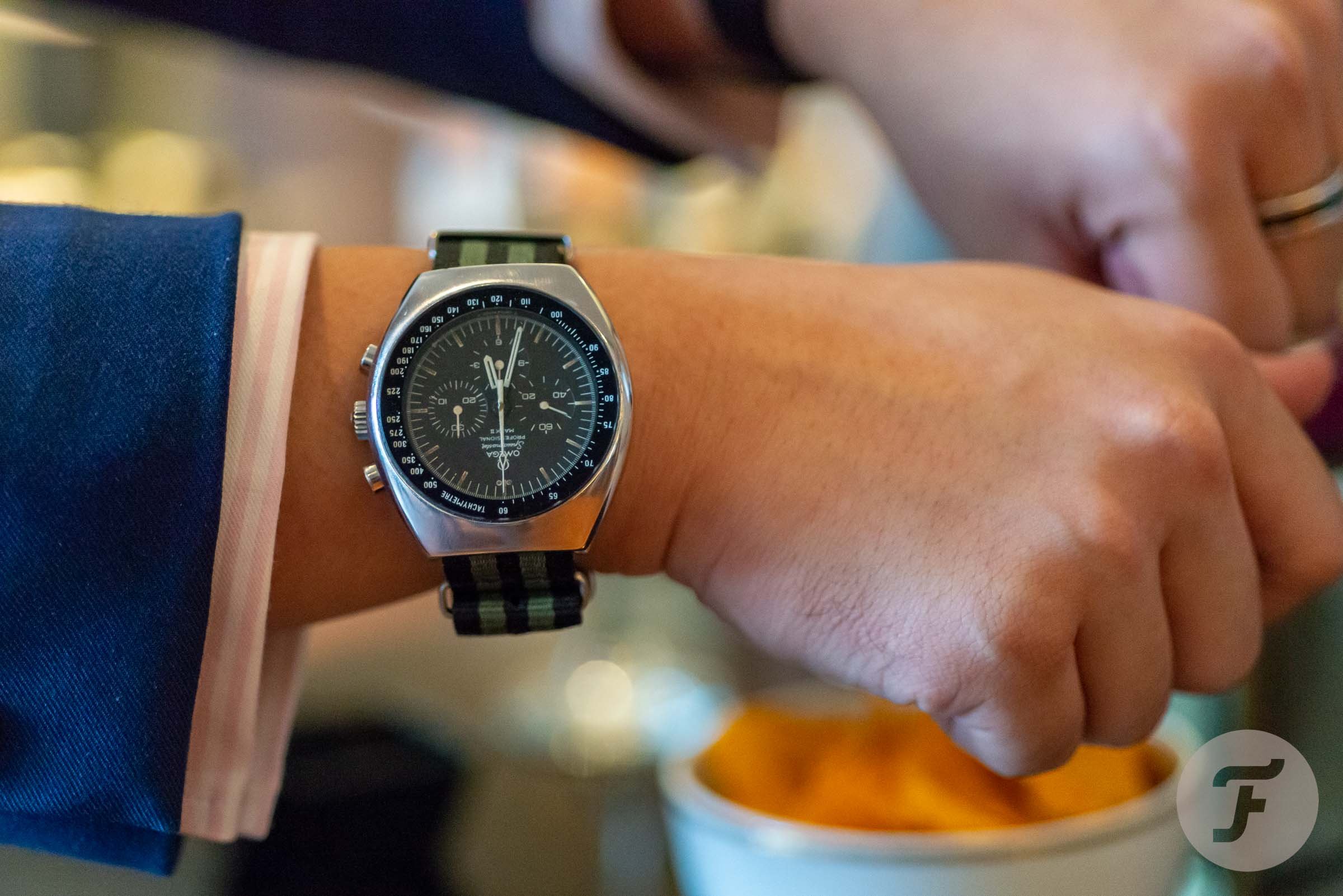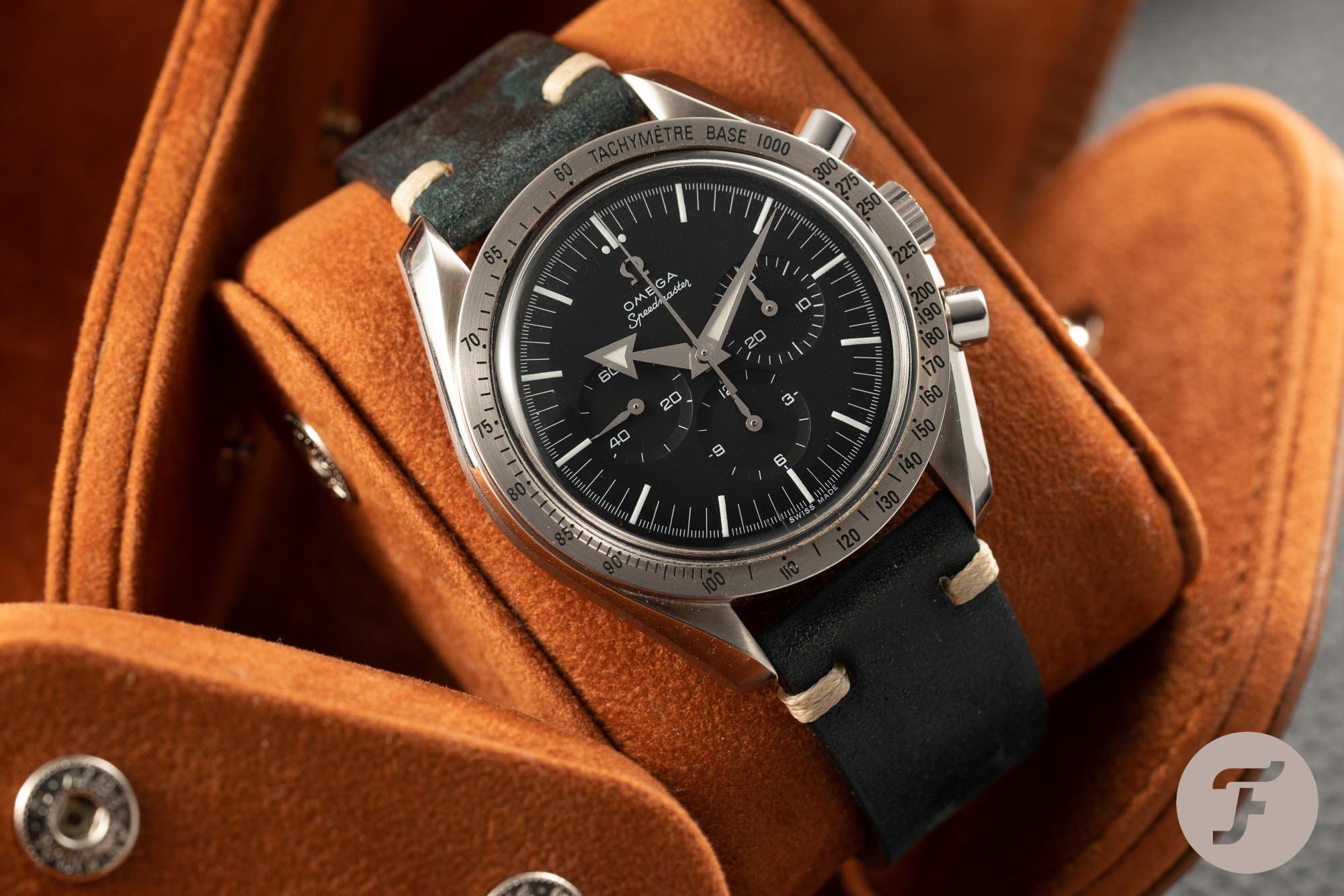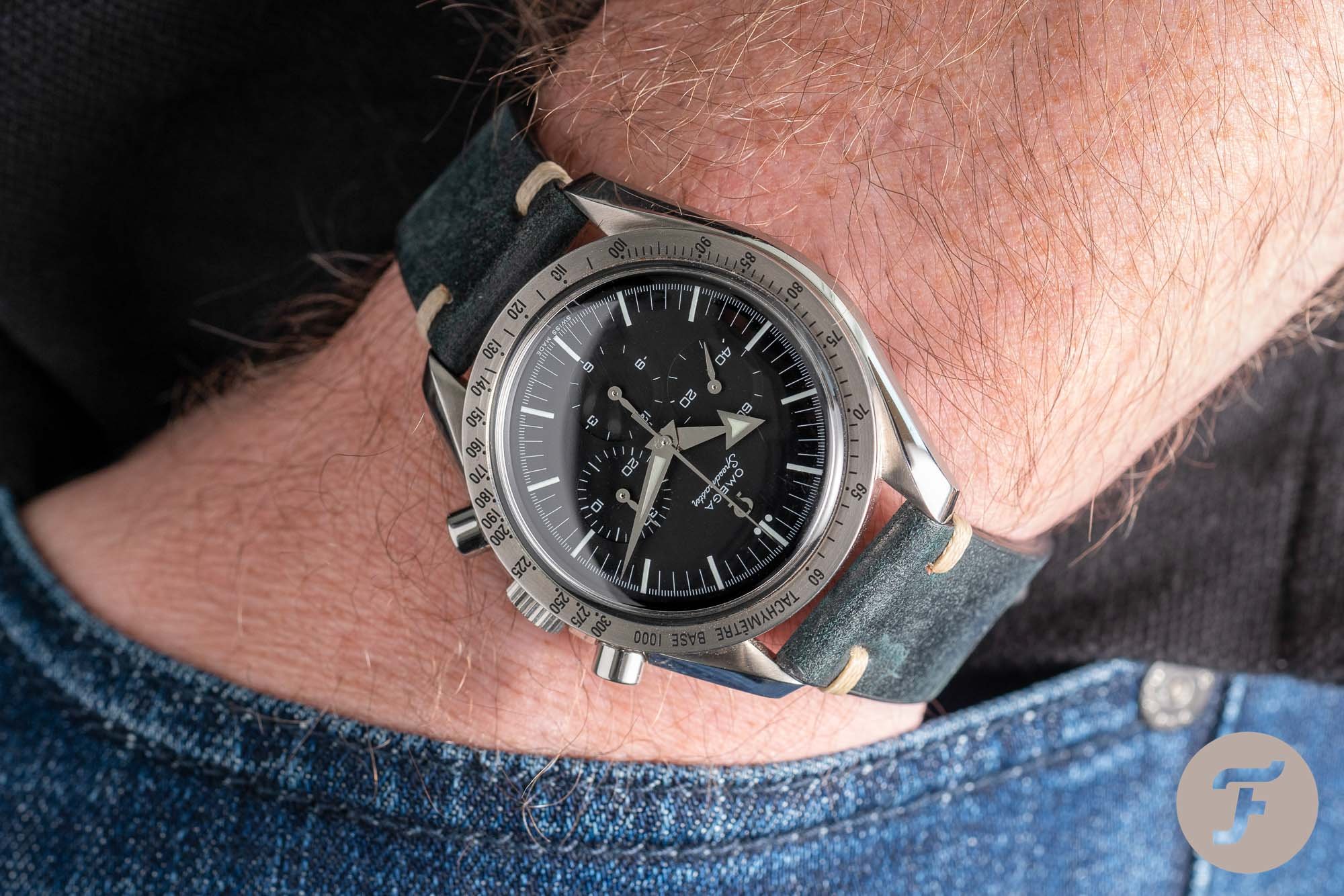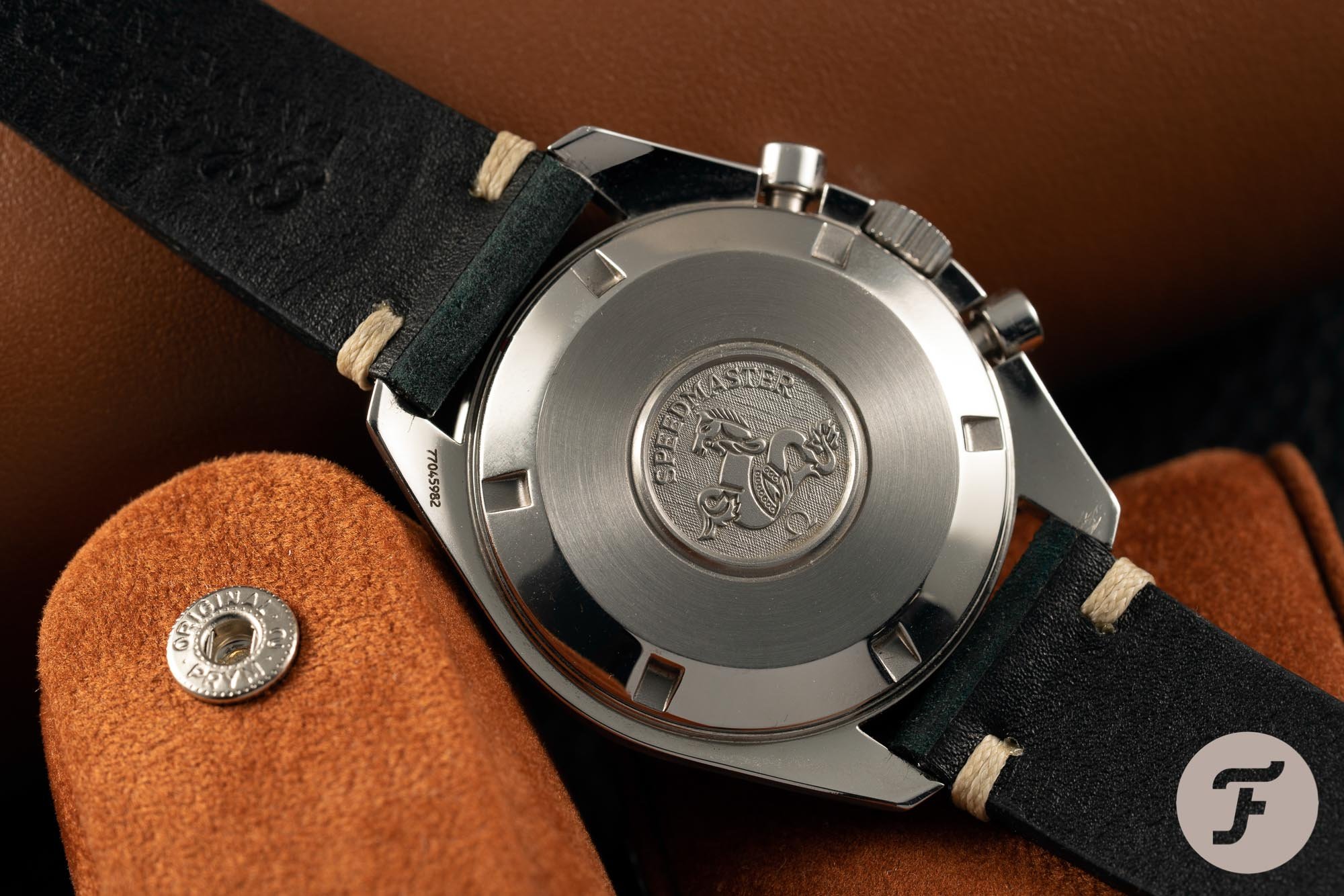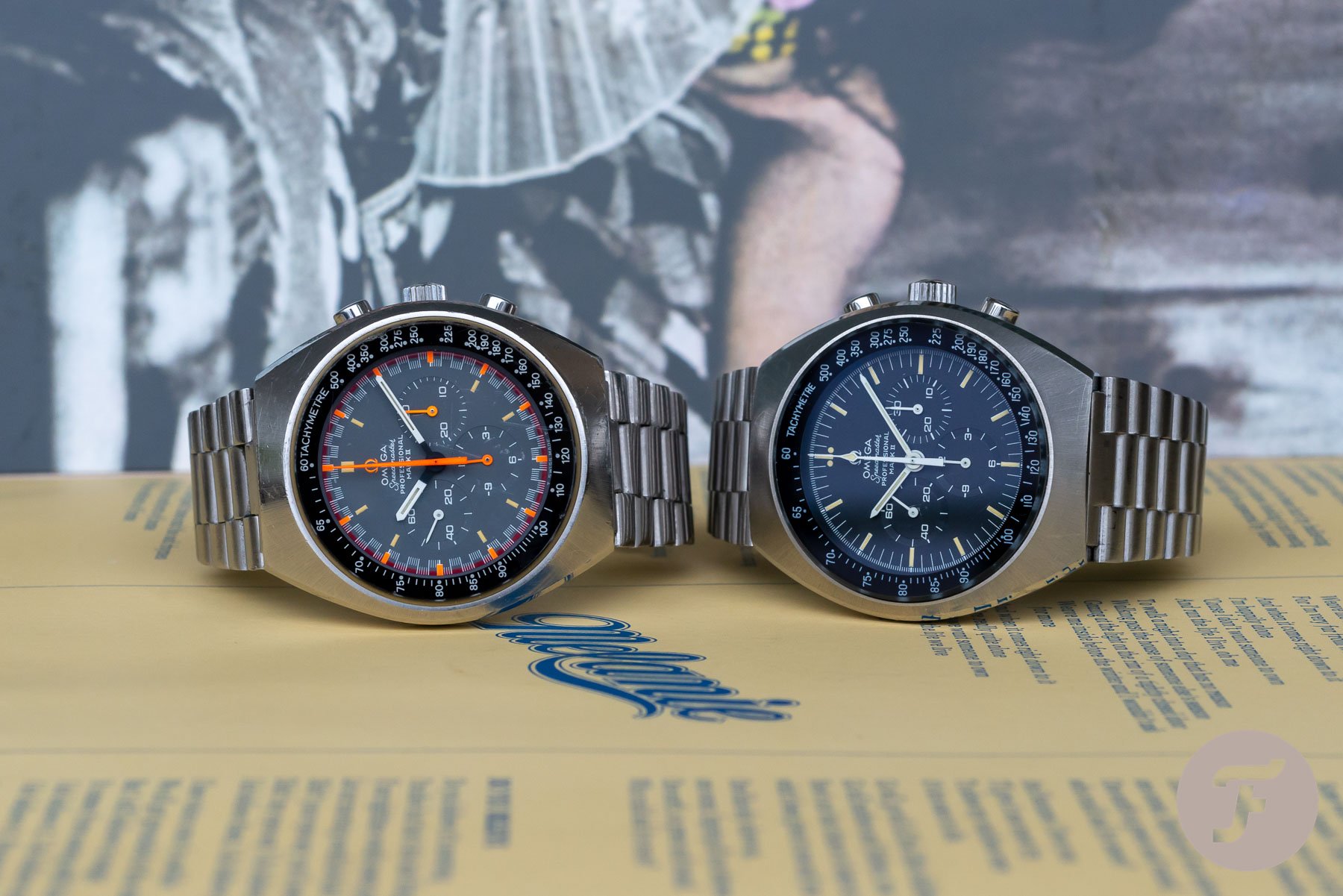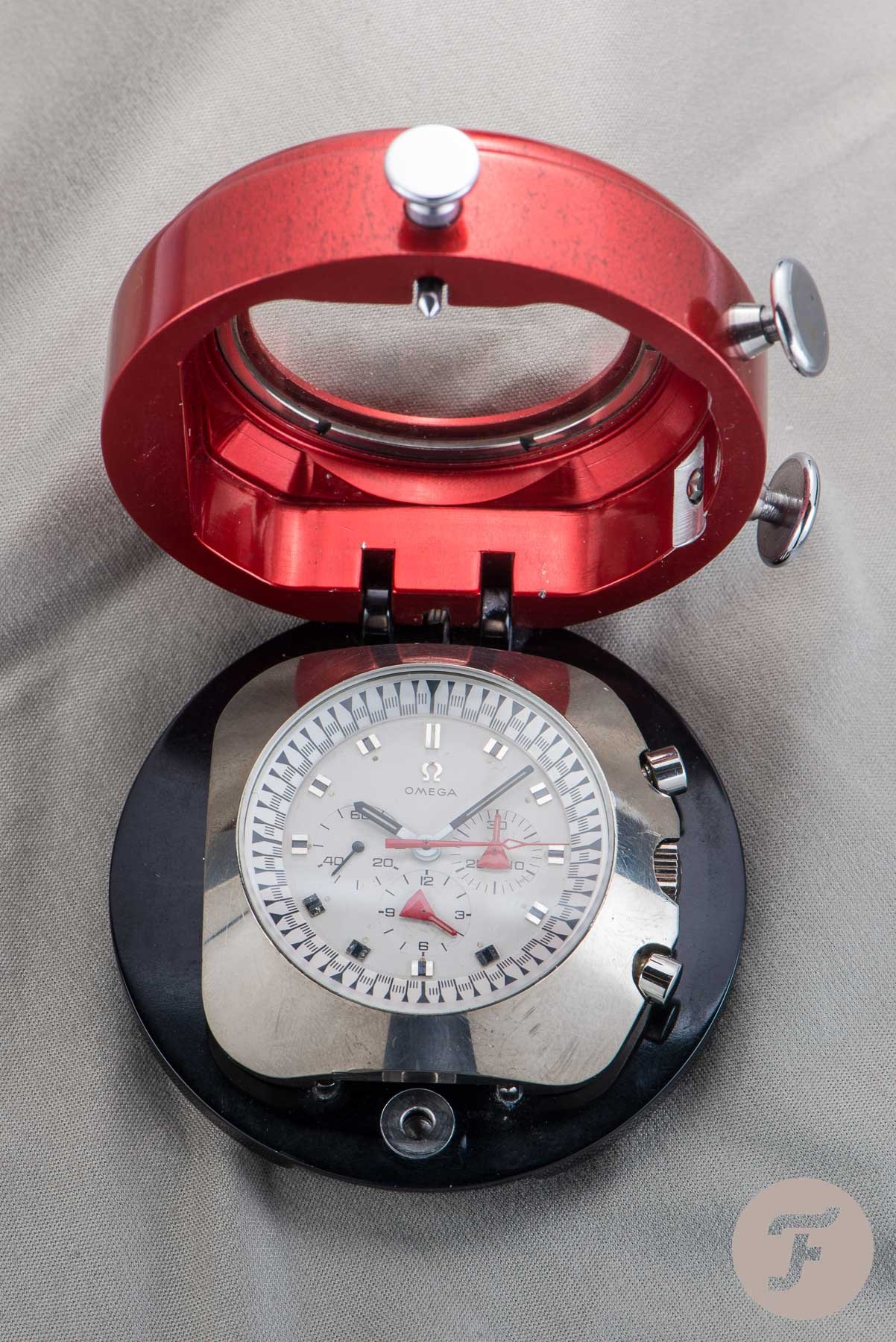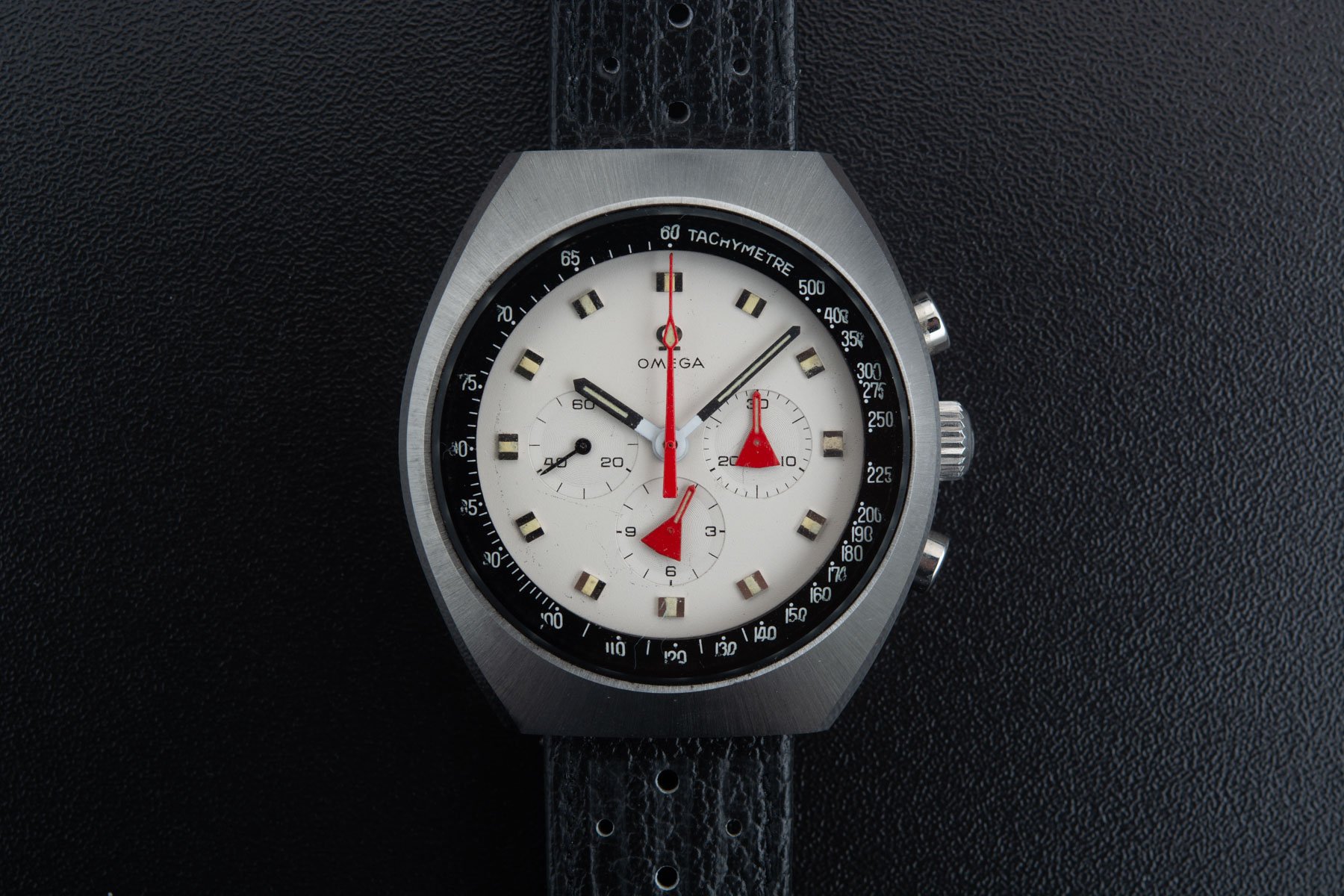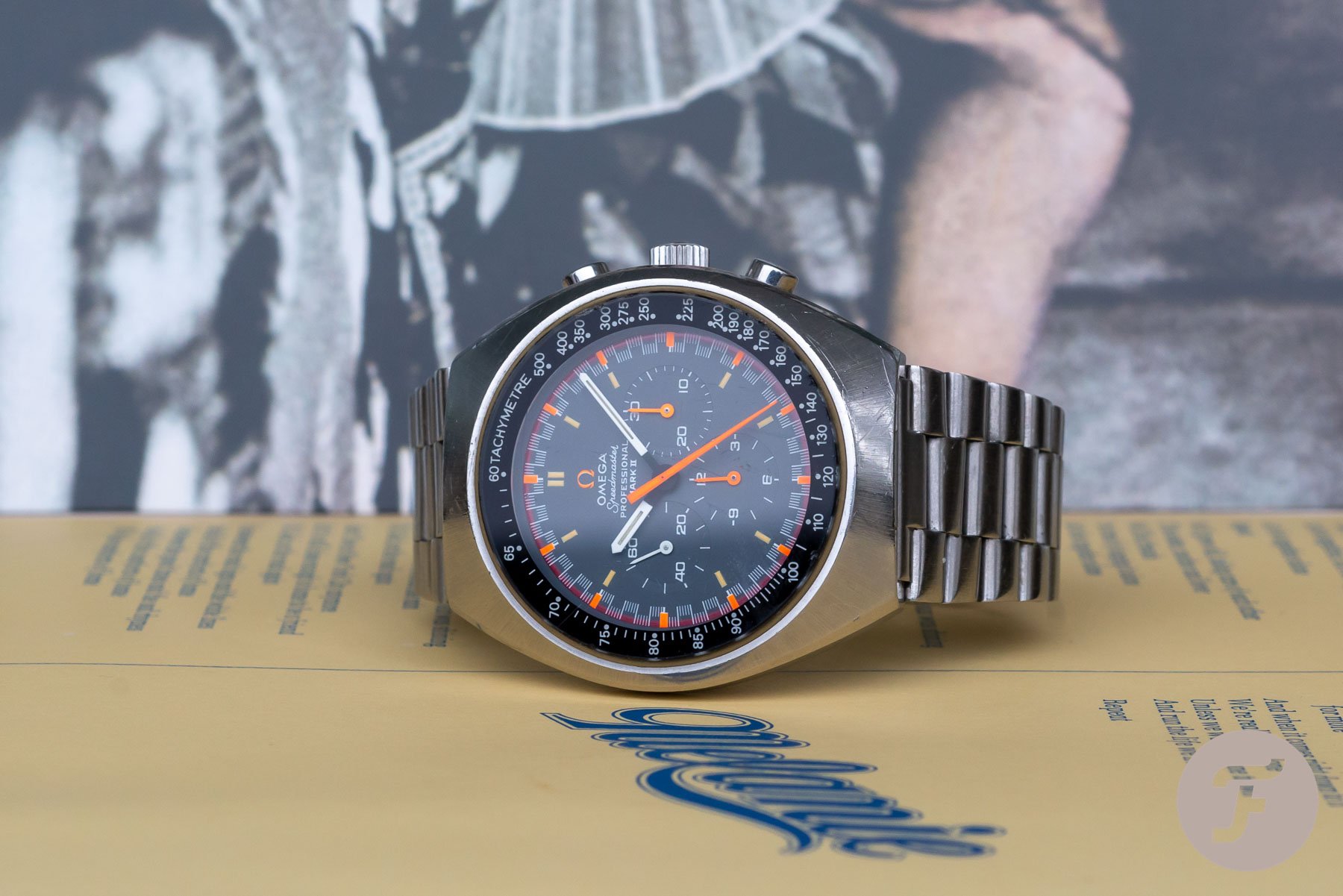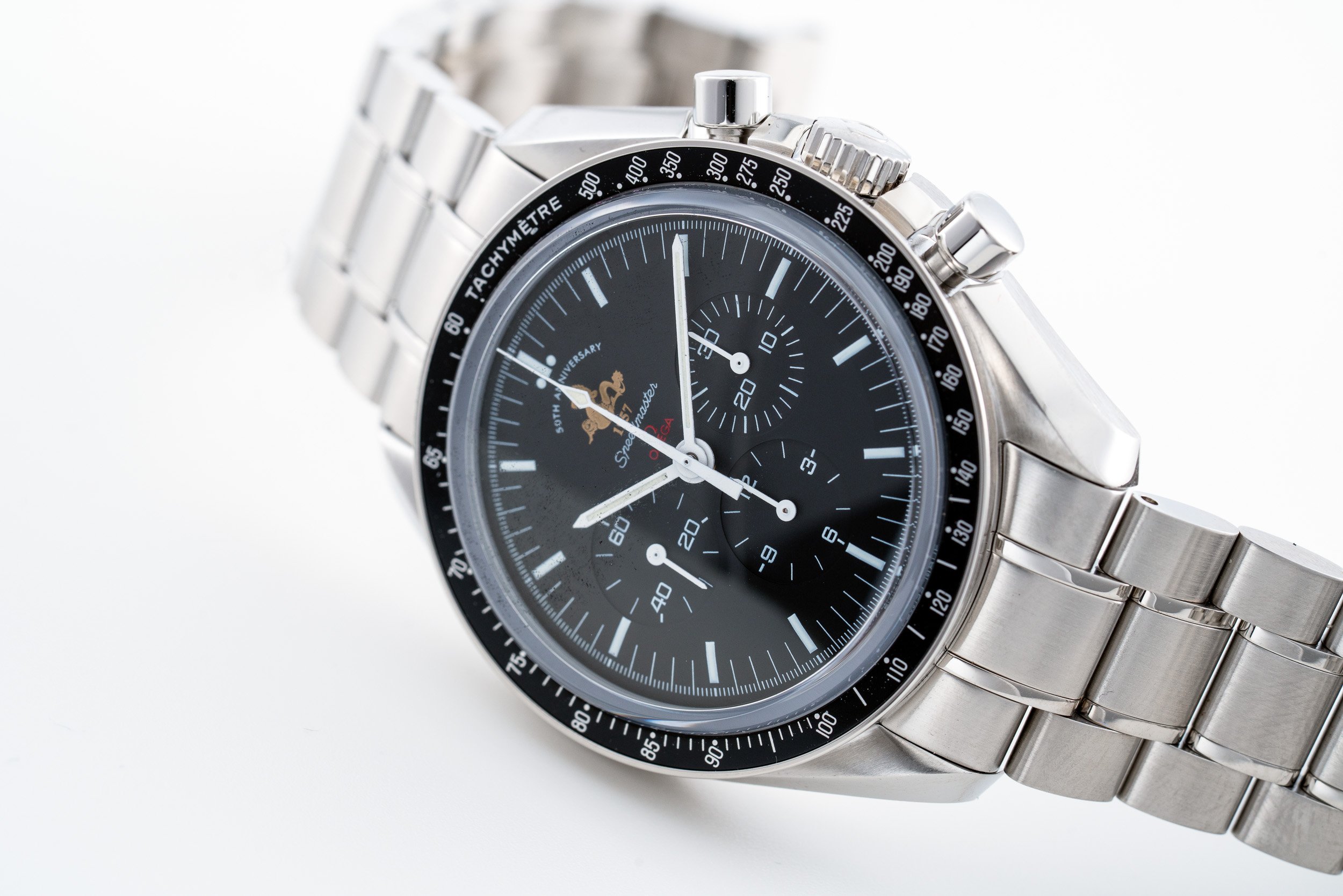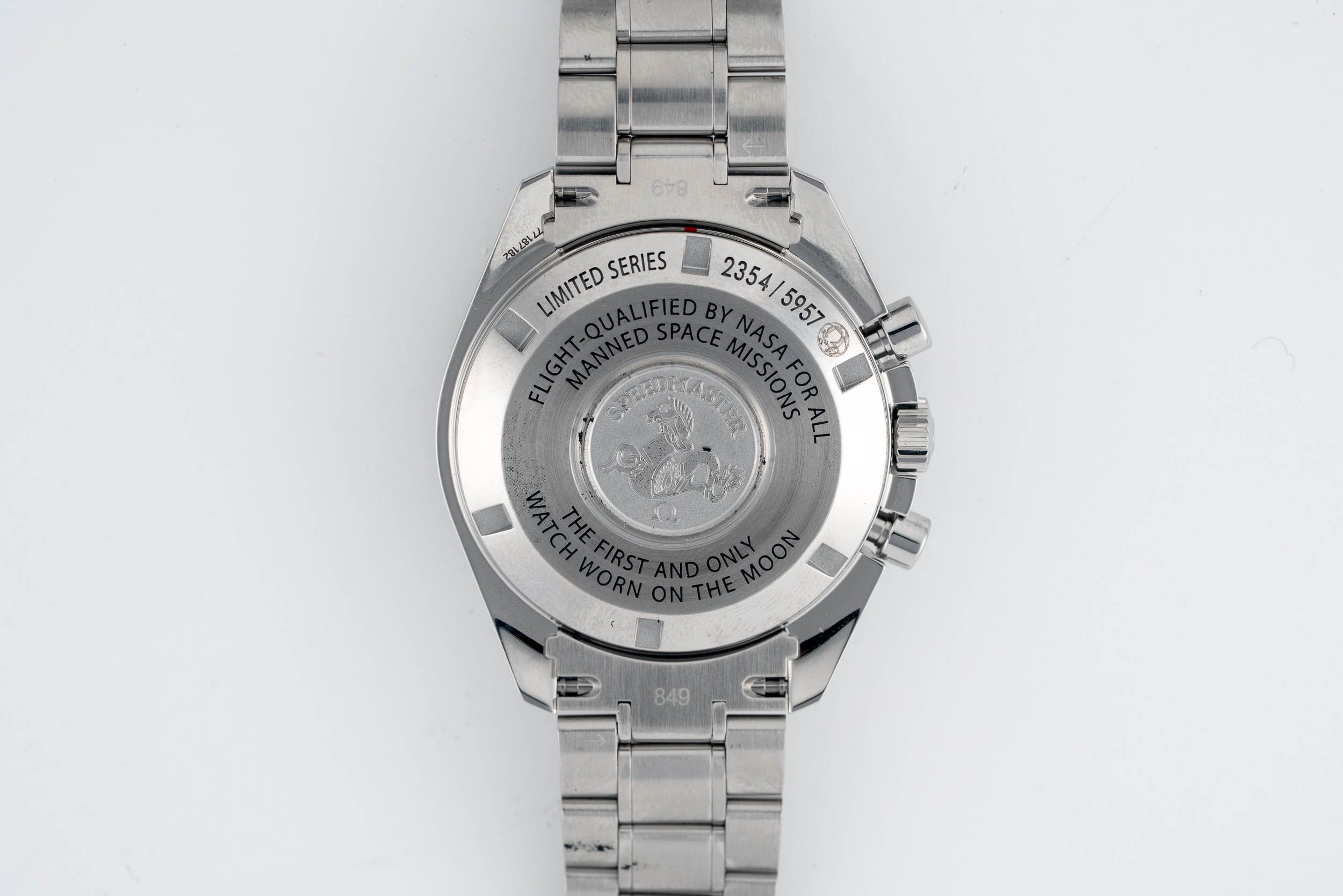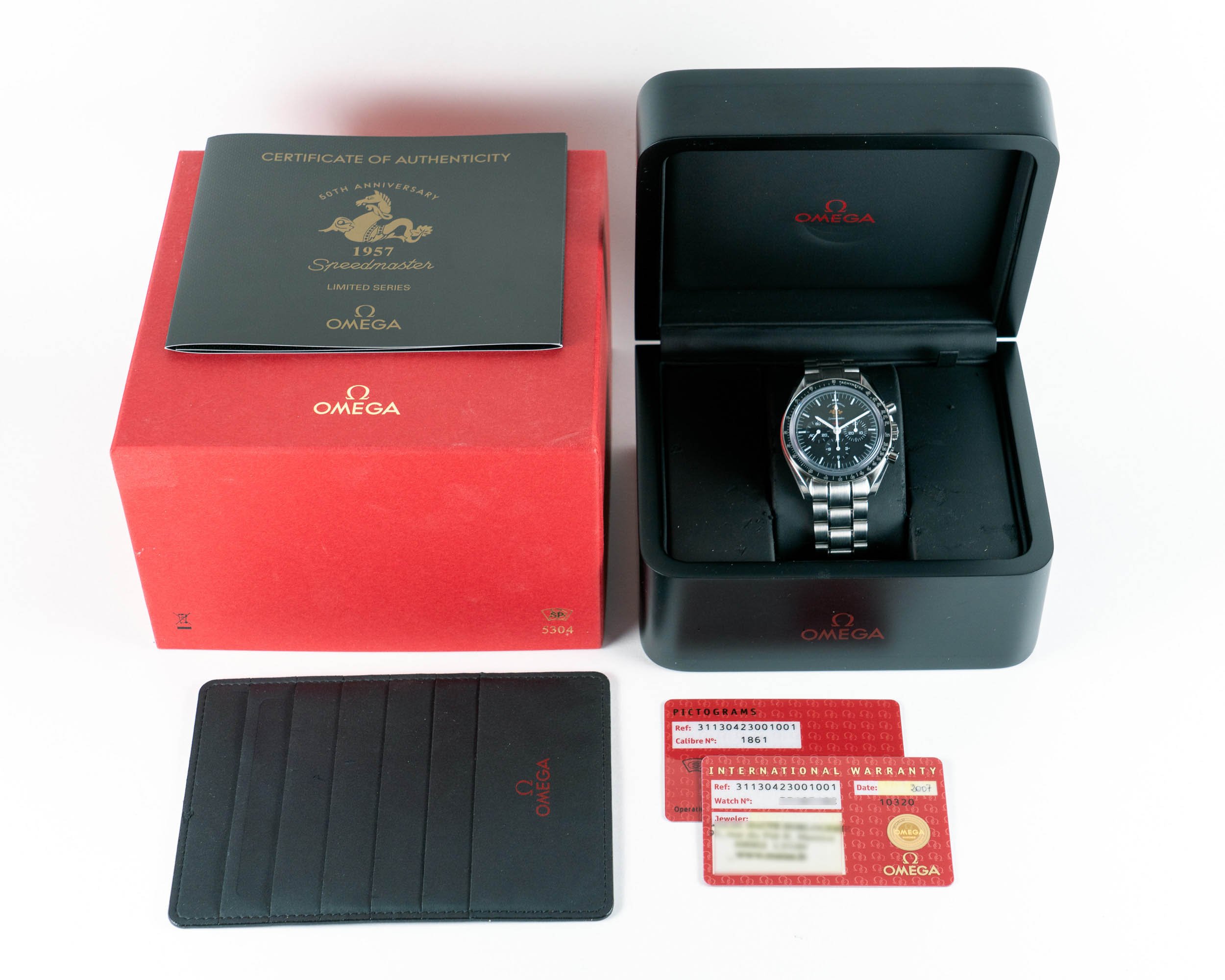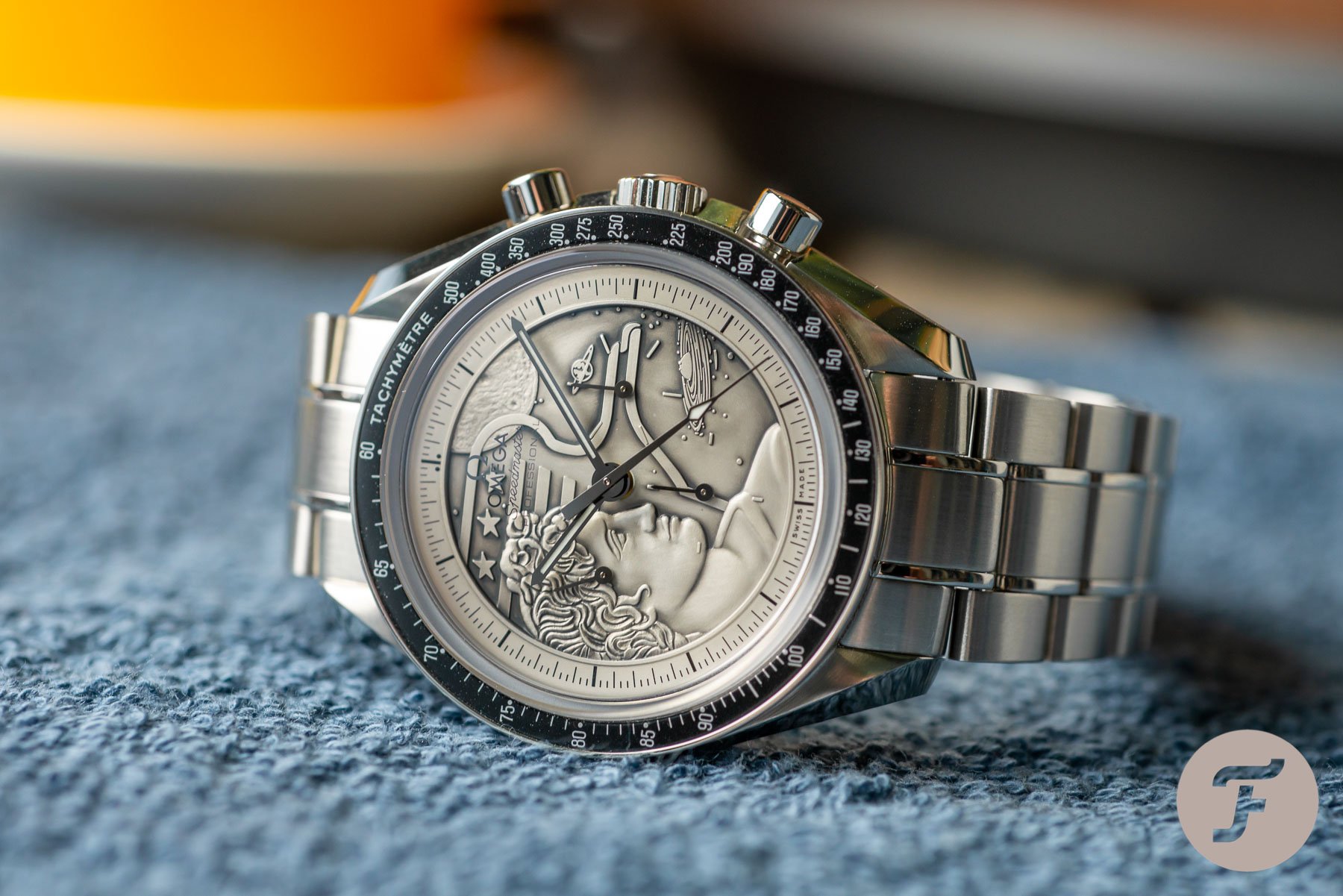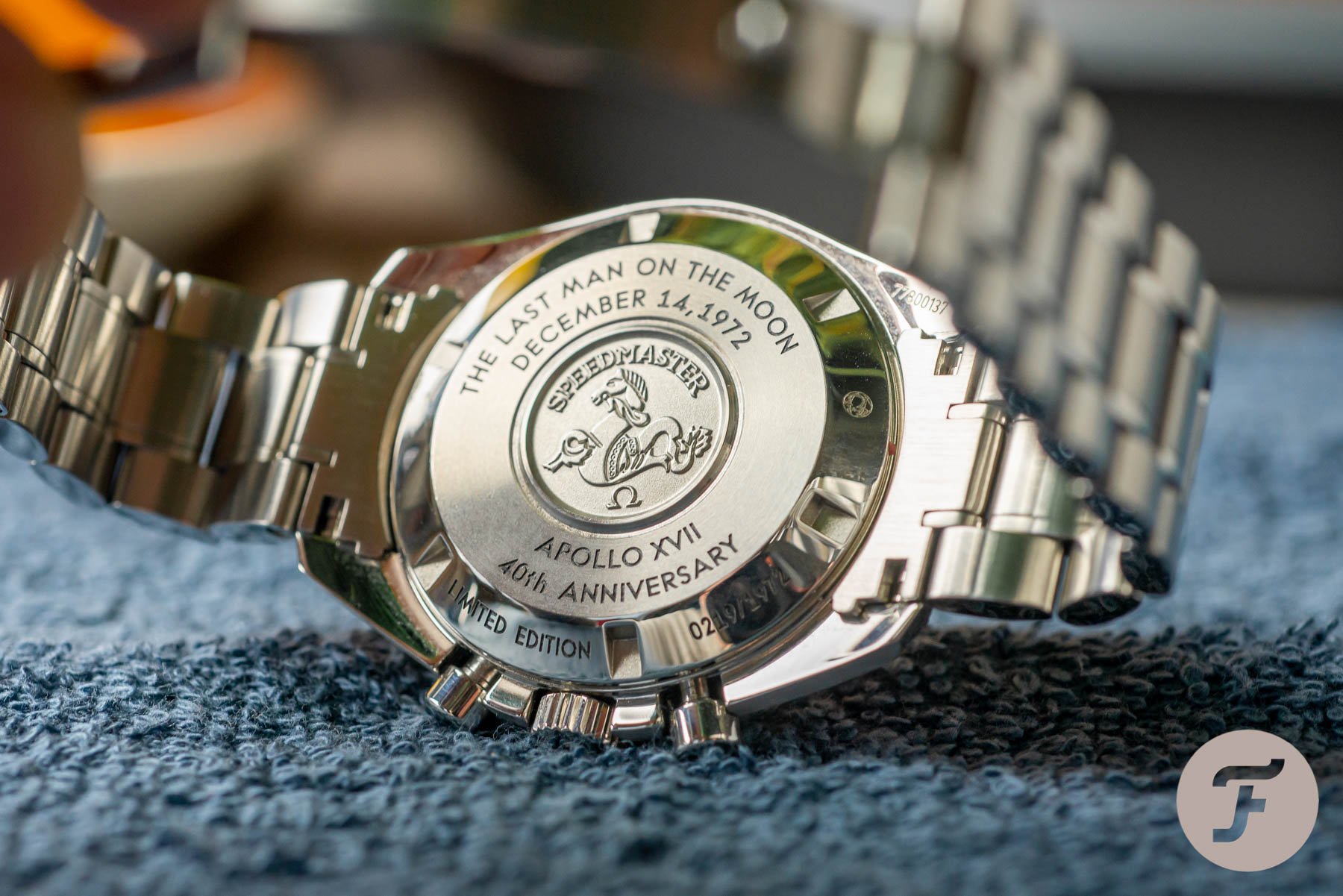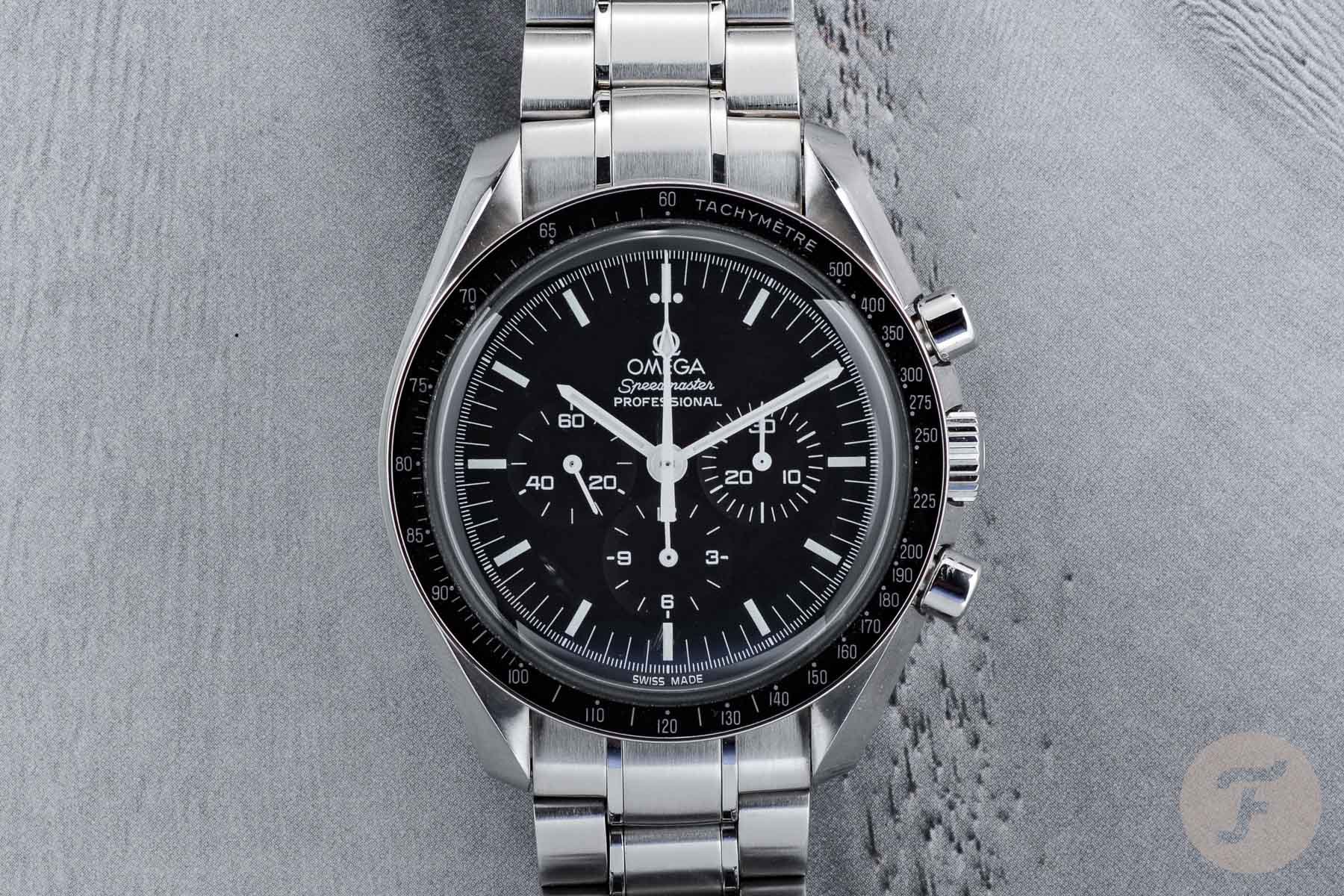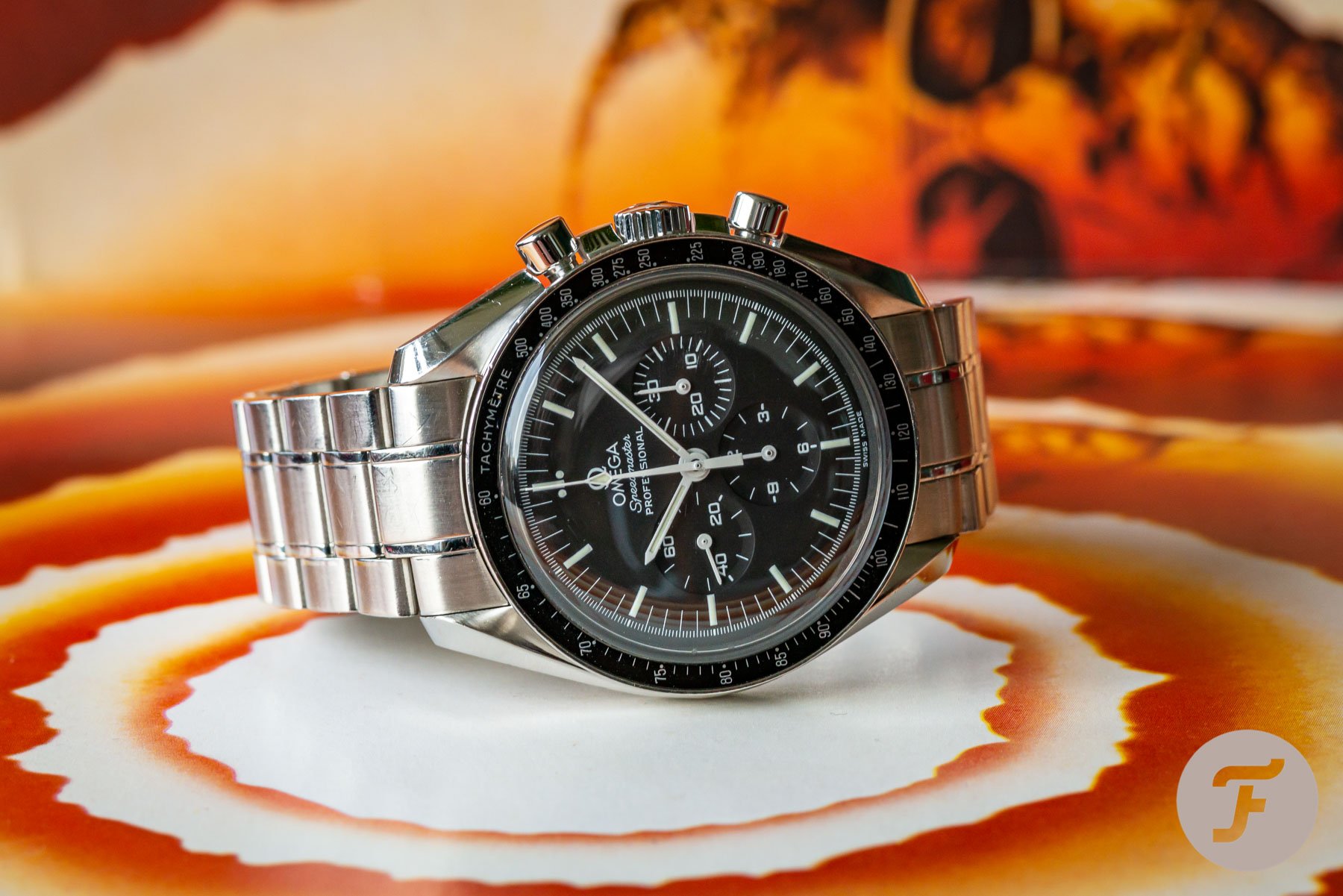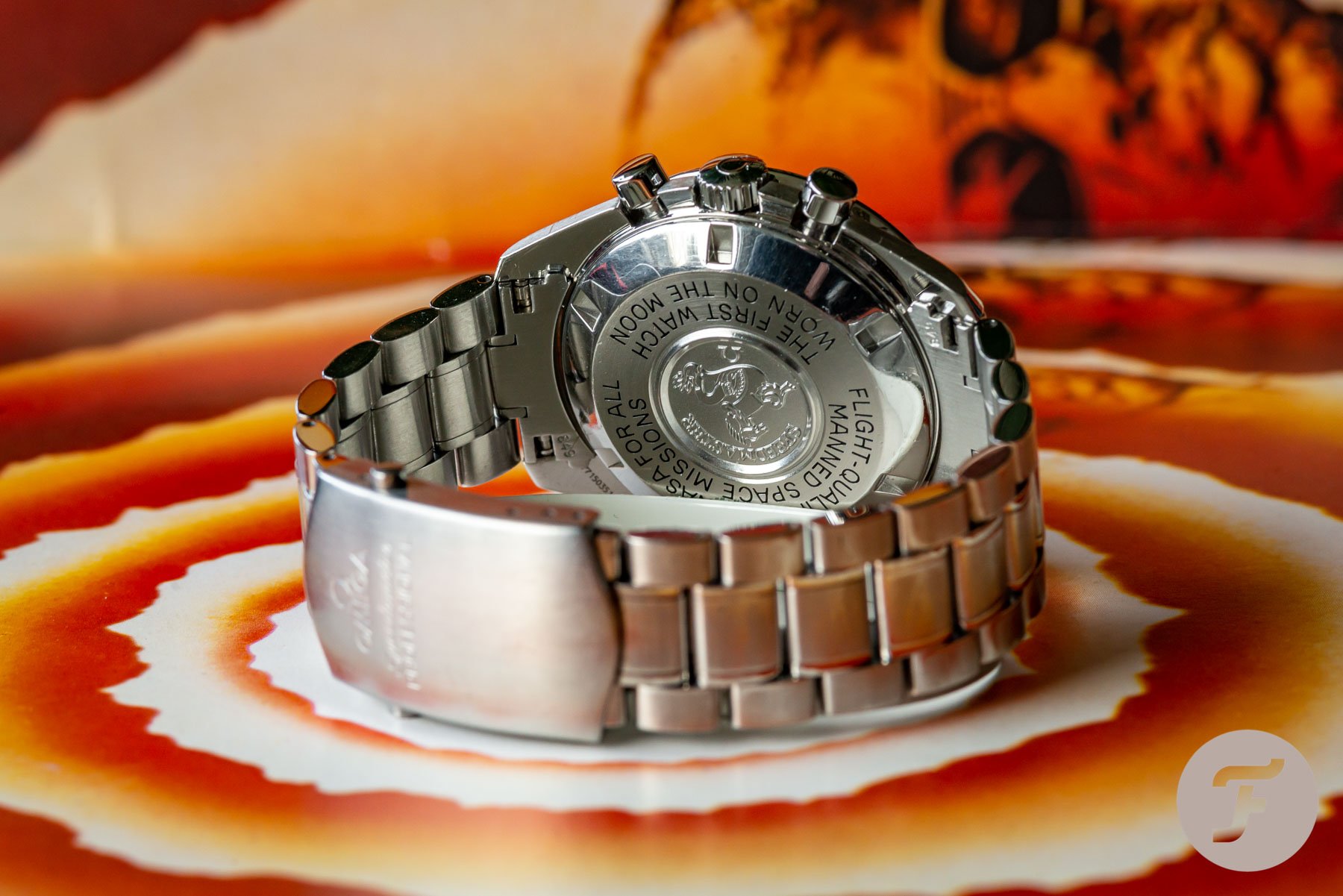Five Omega Speedmasters That Are (Still) Flying Under The Radar
In the last decade, many people have jumped onto the Speedmaster bandwagon. With even some of the less talked about models getting caught up in the hype. This, in turn, results in steep price increases on the pre-owned and vintage market. We have seen this happen with Speedmaster Tintin, whose price has recently skyrocketed (no pun intended). The watch world’s media outlets publishing about them probably doesn’t exactly help in keeping the prices sane, so we’ll take our fair share of the blame. In this article, I will show you 5 Speedmaster watches that are (still) under the radar.
On the one hand, I tend to do some serious eye-rolling when I see some of the price tags on (now-discontinued) Speedmasters. But on the other hand, I must also be fair. Having paid less than €2,500 for my Speedmaster Tintin in 2017 and seeing them being listed today for €14,335 (on average) on Chrono24, does put a smile on my face. Even if they were selling for half of that amount, it would still be a remarkable price difference. However, this phenomenon has also proven to work against me. I missed out on several great Speedmaster watches in the past. Watches I promised myself to get later on. But “later on” took longer than expected. And now, it’s virtually impossible to get a Speedmaster Alaska Project from 2008, or a Speedmaster Apollo XI 45th anniversary without paying close to €10,000. You win some, you lose some…
Five Speedmaster watches that are flying under the radar
It’s not all doom and gloom when it comes to the Speedy market. There are still Omega Speedmaster watches out there that didn’t increase that much, and even seem to be somewhat under the radar. With the risk of putting the spotlight on these models as well, I would like to give you an overview of 5 Speedmaster watches that are still affordable and worth collecting. This is not meant to be taken as investment advice, as I don’t think I’m qualified to make this kind of prediction. Heck, I even cautiously told Omega to make only 300 – 500 Speedy Tuesday “Tribute to Alaska III” watches. I would have never guessed the crazy price tags I’ve been seeing on them recently. So, this list of 5 under-the-radar Speedmasters is only based on my personal preferences.
5. The Speedmaster Broad Arrow “Replica”
- Omega Speedmaster “Replica”
- Reference 3594.50
- Case Diameter: 42mm
- Movement: Caliber 1861
- Production: 1997 – 2003
- Crystal: Hesalite
In 1997, Omega introduced a Missions Case (we covered it here) containing 22 Speedmaster watches with a mission patch, 1 spare caliber 1861 movement for showcase purposes, and this Speedmaster reference 3594.50. The case was created for the 40th anniversary of the Speedmaster, and in total, Omega produced 50 of them. 40 of them for commercial purposes and 10 sets for demonstration/exhibition purposes. 1997 was also the first year for Omega to start using the caliber 1861, the successor to caliber 861. The last iteration of the caliber 861 is very similar to caliber 1861, but earlier iterations of caliber 861 had fewer jewels and different finishing.
In addition, Omega introduced this Speedmaster broad arrow model in gold, a special release limited to 150 pieces. In 1998, the Speedmaster 3594.50 was also available for purchase on its own. Omega referred to it as the Speedmaster “Replica”, as it was heavily inspired by that first Speedmaster reference CK2915. The name is rather poorly chosen, and even back then it was a bit strange. Perhaps the stigma around the word “Replica” contributed to this model’s lack of popularity among collectors.
However, the Speedmaster 3594.50 is a model that does get a lot of love here in the office. Although it isn’t an exact copy of the CK2915, its style elements like the broad arrow hands, steel bezel, applied Omega logo, and lack of “Professional” on the dial, give it quite an interesting look. Especially when the polished elements catch a bit of light. The watch has a more dynamic look to it than the standard Moonwatch with its white baton hands. The asking price is currently between €3,500 and €4,200, making it one of the most affordable 42mm Speedmaster models.
There are some slight variations with regards to this Speedmaster “Replica” 3594.50 that occurred during its production span between 1997 and 2003. Until the year 2000, these watches came with the Speedmaster bracelet reference 1498. From 2001 onwards, Omega used the bracelet reference 1998. The main difference is in the clasp, as the later reference features the buttons for the release mechanism on either side. The Speedmaster 3594.50 was also available on a beautiful tan leather strap with a folding clasp. Apart from that, Omega used special black leather boxes for this reference at first, later switching to the more common red leather boxes (the ones that start to crumble with age).
4. The Mark II 145.014
- Omega Speedmaster Mark II
- Reference 145.014
- Case Diameter: 41.7mm
- Movement: Caliber 861
- Production: 1969 – mid-1970s
The Omega Speedmaster Mark II 145.014 has an interesting history. That alone would make this Mark II a worthy addition to any Speedmaster collection. As you probably know, the models that Omega created for NASA in the past used the codename “Alaska”. This was done to avoid making other brands in the Swiss cities and villages blatantly aware of their collaboration, as even back then, people like to talk and gossip.
Many other watches from Omega used codenames as well, often taking on the names of geographical locations for watches and bird names for movements. Omega set the Alaska Project in motion after the 105.003 was qualified by NASA for all manned space flight. In the first project, Omega decided they wanted to optimize the Speedmaster for use in space. Improving its resistance to extreme temperatures and temperature changes, for example. This explains the big red anodized aluminum outer case for the first Alaska Project watch.
The watch itself was made of titanium (a first in watchmaking) to keep it light and comfortable for the astronauts. Titanium is also less conductive than steel when it comes to temperature. Last but not least, there’s the white dial. Designed to reflect light, it’s better for the temperature of the watch and also much more legible. Long story short, NASA didn’t want to move forward with Omega’s proposal. The Speedmaster 105.003, 105.012, and 145.012 did the job perfectly already and this costly redesign was deemed unnecessary.
In order to put the money Omega had spent on the Alaska Project prototypes to good use, some of the elements were used for a new Speedmaster. Meet the Speedmaster Mark II 145.014. The watch features a tonneau case that was inherited from the Alaska Project prototypes, a mineral crystal instead of Hesalite, and a tachymeter scale printed on the crystal. Inside, there’s chronograph caliber 861. A movement that Omega also started to use for the Moonwatch (reference 145.022) and which became the successor to the column-wheel caliber 321. The Speedmaster Mark II 145.014 was available in two different variations, one with a black and white dial and one with a racing dial (pictured below).
This standard dial/racing dial variation was something that Omega also tried on the Speedmaster Professional models back in those days. These have also become incredibly sought-after today (a modern version can also be found as a 2004 re-issue for the Japanese market). Both the normal “monochrome” dial and the racing dial, share the same reference number. The times when you could buy these watches for well under €1,000 are long gone (by at least a decade). You should expect them to come up for sale for €2,000 – 3,300, depending on their condition. You should also expect the version with a racing dial to be somewhat more expensive.
3. The Speedmaster 50th Anniversary gold Hippocampus
- Omega Speedmaster Professional 50th Anniversary
- Reference 311.30.42.30.01.001
- Case Diameter: 42mm
- Movement: Caliber 1861
- Production: 2007
- Limited to 5957 pieces
In 2007, Omega celebrated the 50th anniversary of their world-renown chronograph rather extensively. Besides the limited edition (1957 pieces only) Speedmaster 50th-anniversary reference 311.33.42.50.01.001 — a watch powered by the hand-wound caliber 3201 with Co-Axial escapement, which also featured an enamel dial — Omega also released a 42mm Speedmaster Professional Moonwatch 50th anniversary model. Limited to 5957 pieces, the main difference with the regular Speedmaster Professional 3570.50 was the gold-colored Hippocampus logo and the “50th Anniversary” text on the dial.
The case back is the standard one, featuring the signature “flight-qualified by NASA” engraving, but with “limited series” and the watch’s number out of 5957 also engraved on the case back’s bevel. People often ask why there’s a “Seamaster” logo on the back of the Speedmaster. The logo may look like a seahorse but is, in fact, a “Hippocampus”. A half-horse half-fish creature from Greek mythology where legend has it, a group of these beasts pulled Neptune’s chariot. The use of the logo comes from the fact that Omega used it to indicate that a watch was water-resistant. A little bit confusing, as the logo is quite indicative of the Seamaster line, and to make matters worse, the standard Speedmaster Professional isn’t even that water-resistant. But in 1957, any bit of water resistance was more than welcome and proudly indicated, and so the logo remains to this day.
Somehow, this watch isn’t incredibly well-loved, or at least it wasn’t for a long time. Prices have gone up a bit in the past few years, but this increase seems to be on par with the “standard” inflation of prices. On average, pre-owned models can be found on offer for €5,000 to €6,000, as always, depending on the condition. Just make sure everything is there when buying one of these, like cards, certificate of authenticity, and the black box with red cardboard outer box.
2. Speedmaster Last Man on the Moon
- Omega Speedmaster Professional Apollo XVII
- Reference 311.30.42.30.99.002
- Case Diameter: 42mm
- Movement: Caliber 1861
- Limited to 1972 pieces
Don’t click away just yet, hear me out! The Speedmaster Professional Apollo XVII 40th anniversary dates back to 2012, and is one of the most awkward-looking modern Speedmasters. I never cared much for this one, but that completely changed when I saw someone wearing it during an event in Switzerland. It really is a prime example of a watch you need to see in the metal, and preferably on someone’s wrist. My colleague Gerard decided to also buy one not that long ago, and every time I see him wear it, I like it more and more. This watch commemorates the last Apollo mission in 1972, when astronaut Gene Cernan was the last man on the moon. Just before he stepped back onto the ladder of the lunar lander, he kneeled down and scribbled the initials of Tracy Dawn, his daughter, in the Moondust.
Her initials “TDC” are still there on the Moon’s surface, and will probably remain for centuries to come. Gene Cernan accompanied astronaut Harrison Schmith in the lunar module and astronaut Ron Evans remained Command Module. Ron Evans, by the way, was the astronaut who brought the first Speedmaster Professional 145.022 with caliber 861 into space. The watch was used as timing equipment for an onboard project and was not actually worn on the wrist.
This Speedmaster Professional Apollo XVII reference 311.30.42.30.99.002 was limited to 1972 pieces featuring the unmistakable dial. It is a sterling silver rendition of the Apollo XVII mission patch, with an outer minute track that helps provide an accurate reading of the time. Although there are some scales on the subdials, they don’t really provide a precise readout. All hands are black, giving enough contrast with the silver for legibility. The rest of the watch, other than the sapphire crystal, is identical to the then-current Moonwatch.
The Omega logo and Speedmaster Professional text are printed onto the inside of the crystal. The case back has a special engraving as well, which reads: “The Last Man on the Moon — December 14, 1972 — Apollo XVII 40th Anniversary Limited Edition”. This watch came in a special black box, with an Apollo 17 mission patch. The retail price of this watch back in 2012 was €5,380, which remains close to the average price of this watch in the pre-owned market.
1. The “standard” Moonwatch
- Omega Speedmaster Professional
- Reference 3570.50
- Case Diameter: 42mm
- Movement: Caliber 1861
- Production: 1997 – 2014
No foul play here, but I feel that the Omega Speedmaster Professional 3570.50 is still an under-the-radar piece. This watch, which became reference 311.30.42.30.01.005 in 2014 with some minor changes to the bracelet (screwed links as opposed to the pin-and-collar system) and mainly received an upgrade to its packaging. This reference was introduced in 1997 — or 1996, some might say — as the successor to the 3590.50, and was the first reference to use the new-style bracelet, the caliber 1861 (or 1863 for the reference 3572.50 and 3573.50 models), and Super-LumiNova for the hands and hour markers.
It was in production all the way up until 2014, where Omega applied some of the aforementioned changes. The main difference though was in the packaging. Omega went from the red leather box to the large black “Moonwatch” box with all the goodies inside (extra straps, a loupe, strap change tool, etc.). I bought my standard Moonwatch back in 2013, so I just missed out on the big back box that came one year later. On the other hand, the change in packaging did increase the price quite significantly. I did get the box eventually, as it is also the packaging for the Speedmaster Calibre 321 “Ed White” that Omega introduced in 2020. The latest rendition of the “standard” Moonwatch, with the Master Chronometer caliber 3861, introduced in early 2021 (on a Speedy Tuesday), comes in a small variation of the Moonwatch box.
Either way, the 3570.50 is a wonderful watch that can be found with some slight variations. Some of the 1990’s models have the older version of the bracelet without release buttons on the clasp, where are the post-2000 models feature the button clasp-release system. The 3570.50 was also used as the base model for variations with a sapphire crystal ( the 3573.50 “Sapphire Sandwich”) and the version with Hesalite front crystal and sapphire case back (ref. 3572.50). The 3570.50 is a direct descendent of the original Speedmaster that was used on the moon (references 105.012 and 145.012). Prices vary based on condition, but they remain within the €3,500 to €4,500 range for a pre-owned Speedmaster Professional reference 3570.50.
So there you have it! Five Omega Speedmasters that I feel are still flying under the radar. These are different models from the Speedmaster line that don’t get as much love as some of the more obvious or newer models. Do you feel that I’ve missed out on any references that you feel are undervalued? Let me know in the comments down below.

